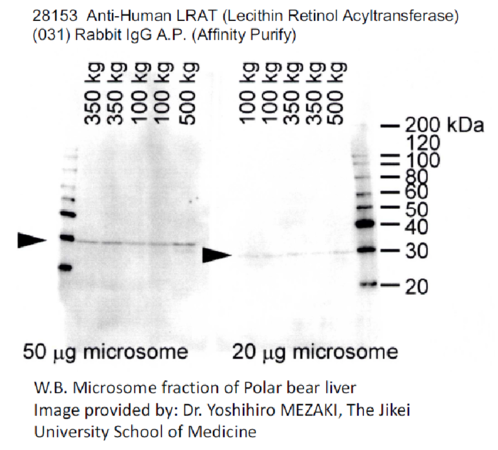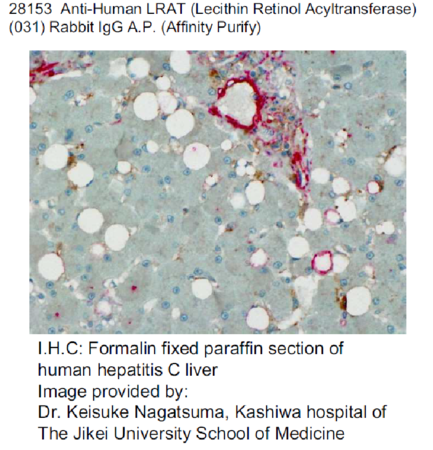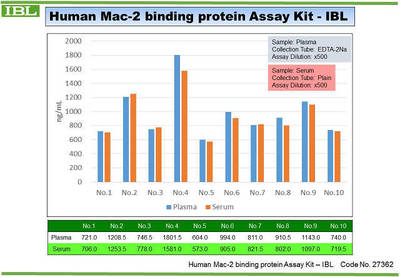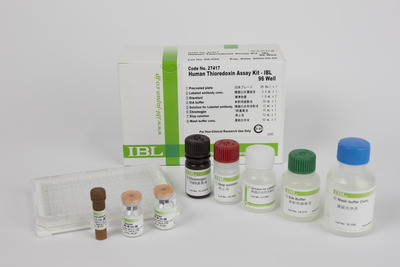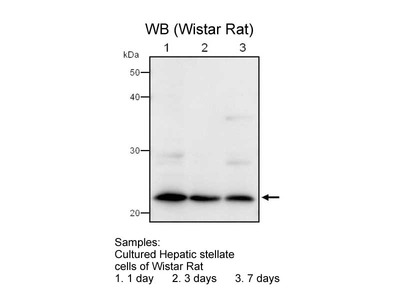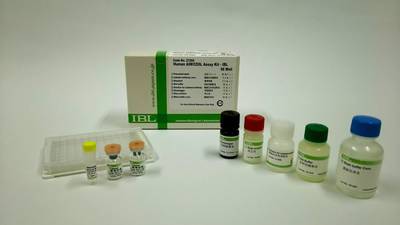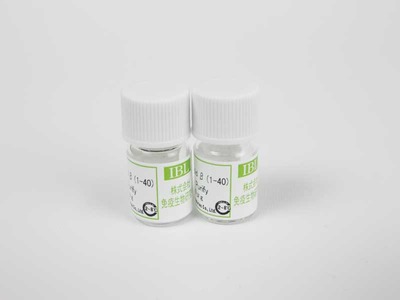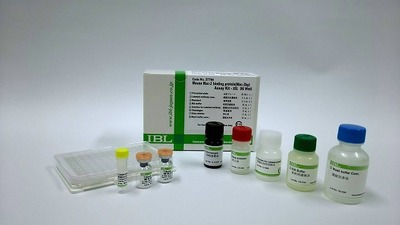- HOME >
- For Researchers >
- Product Search >
- Search Result >
- #28153 Anti-Human LRAT (Lecithin Retinol Acyltransferase) (031) Rabbit IgG A.P.
Product Search
#28153 Anti-Human LRAT (Lecithin Retinol Acyltransferase) (031) Rabbit IgG A.P.
- Intended Use:
- Research reagents
- Application:
- WB, IHC
- Package Size1:
- 50 μg
- Package Size2:
- 5 μg
- Note on Application Abbreviations
- WB:Western Blotting
- IHC:Immunohistochemistry
※ The product indicated as "Research reagents" in the column Intended Use cannot be used
for diagnostic nor any medical purpose.
※ The datasheet listed on this page is sample only. Please refer to the datasheet
enclosed in the product purchased before use.
Product Overview
Product Overview
| Product Code | 28153 |
|---|---|
| Product Name | Anti-Human LRAT (Lecithin Retinol Acyltransferase) (031) Rabbit IgG A.P. |
| Maker Name | Immuno-Biological Laboratories Co., Ltd. |
| Intended Use | Research reagents |
| Application | WB, IHC |
| Species | Human |
| Immunizing antigen | Synthetic peptide of a part of Human LRAT (GKDKGRNSFYETSSF) |
| Purification Method | Purified with antigen peptide |
| Specificity | React with Human LRAT. |
| Package Form | Lyophilized product from 1 % BSA in PBS containing 0.05 % NaN3 |
| Storage Condition | 2 - 8℃ |
| Poisonous and Deleterious Substances | Applicable |
| Cartagena | Not Applicable |
| Package Size 1 | 50 μg |
| Package Size 2 | 5 μg |
| Remarks1 | The commercial use of products without our permission is prohibited. Please make sure to contact us and obtain permission. |
Product Description
Product Description
LRAT is a retinol-esterifying enzyme and it is mainly found in G0 stage of stellate cells (Ito cells) in liver. At stellate cells, LRAT is thought to take a role engulfing and pooling excess vitamin A released from hepatocytes. As normal hepatocytes are characterized by lipid droplets pooling esterified vitamin A, LRAT is expected to be a marker of stellate cells in G0 stage. LRAT is also expressed in retinal pigment epithelium, small intestine epithelium and skin keratinocyte as well as liver. The physiological significance of LRAT protein at the endothelium is not clarified, yet.
This antibody reacts with stellate cells and endothelia of human.
This antibody reacts with stellate cells and endothelia of human.

